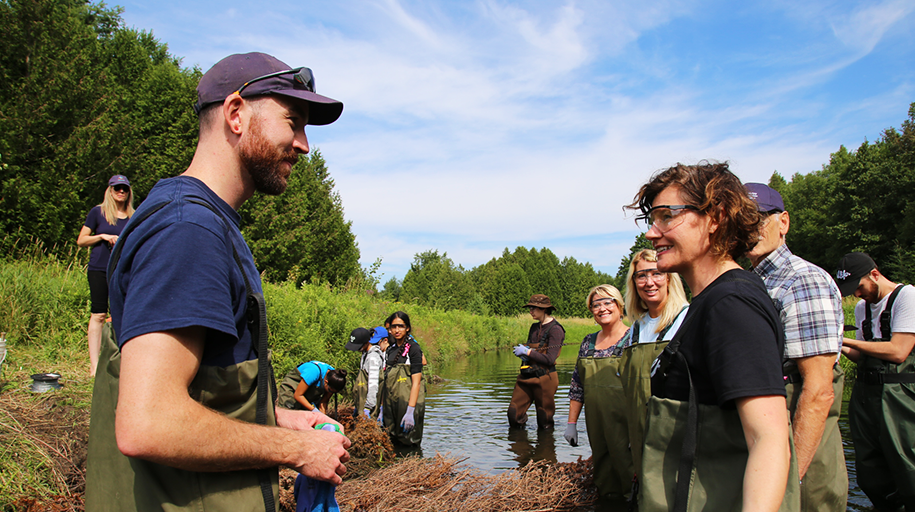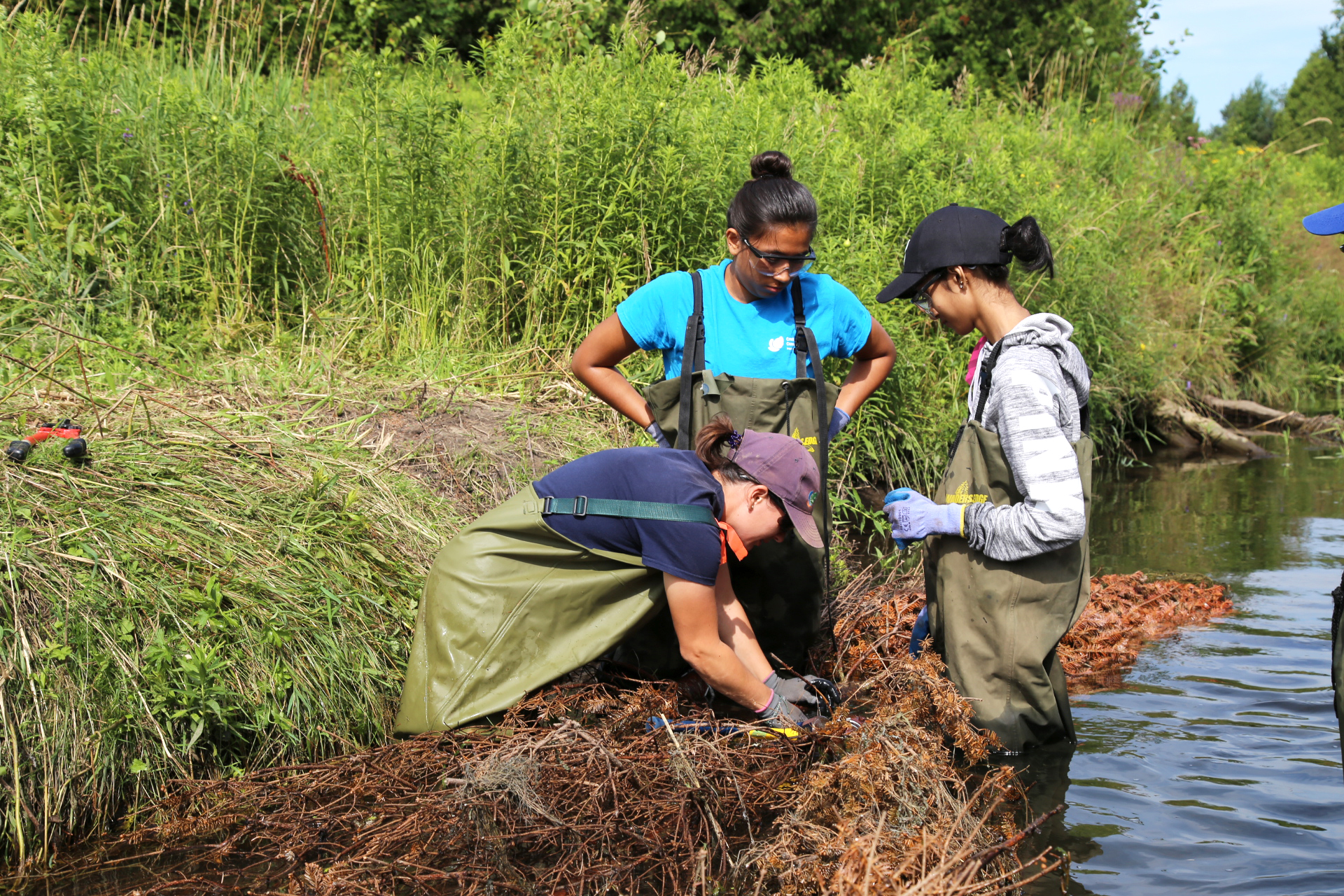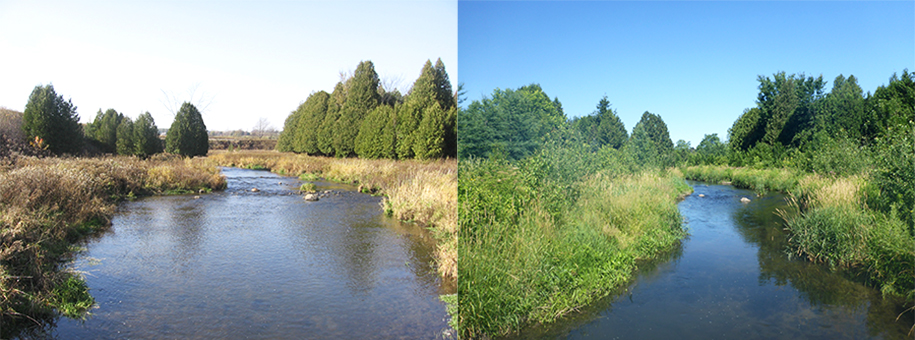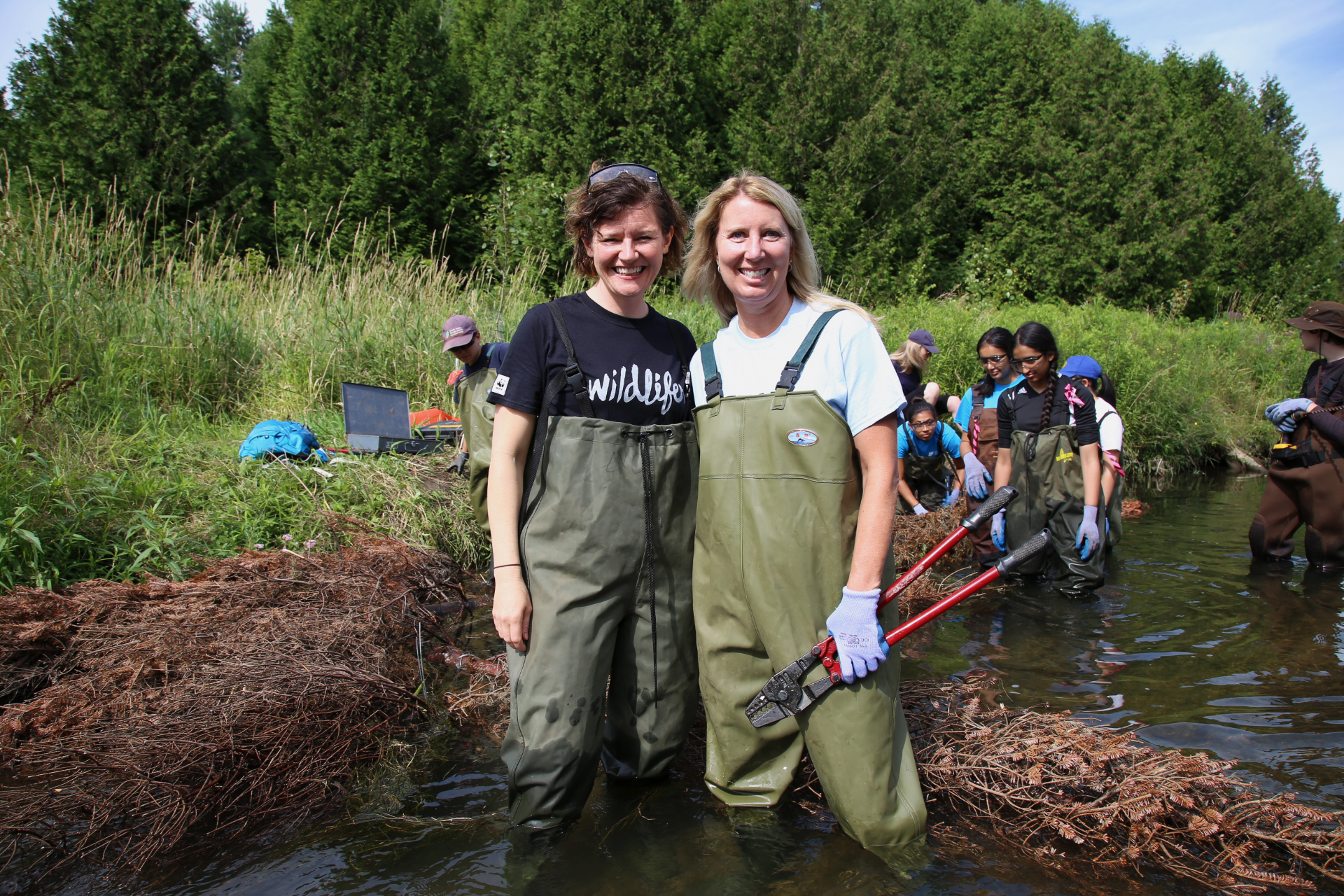Old Christmas trees give new life to Credit River
Have you ever wondered what to do with that Christmas tree once the holidays are over? I never would have guessed they can be used to restore river ecosystems. But that’s what I learned on a recent visit to the Credit River outside Toronto with Credit Valley Conservation (CVC). The organization is using money from WWF-Canada’s Loblaw Water Fund to restore brook trout habitat by sinking donated trees.

The Upper Credit River was once surrounded by farmland. Decades of cattle going to the water caused the banks to erode, swelling the river to five times its natural width. This changed the ecosystem: The water became much shallower, warmer and straighter. The new conditions weren’t good for brook trout, which need cold, clean water and habitat for spawning to thrive.
Mike Puddister, CVC’s director of watershed transformation, referred to brook trout as their “canary in the coal mine,” because a healthy brook trout population means the habitat is healthy. If CVC can “bring back the brookies,” they’ll know they have succeeded in improving the health of the river.

I put on hip waders and got in the river alongside Sarah Davis, president of Loblaw Companies Limited, to see firsthand how its done.
Together, we helped CVC volunteers fasten the donated Christmas trees to cedar logs dug into the bank. The trees will collect silt from the river and next spring there will be land where the year before there was water. This will narrow and deepen the river in specific sections, restoring its natural curves. CVC is also planting native trees and plants along the banks to shade the river, as well as installing fish habitat structures for brook trout to hide and catch the small organisms that live in the water.
Restoring the river to its natural state is something that would normally take hundred of years. CVC aims to speed up the process to just over a decade.

WWF’s Watershed Reports found that the Great Lakes watershed (where the Credit Rivers is located), like many bodies of water in Canada, is under stress. The Loblaw Water Fund enables us to partner with innovative on-the-ground water groups like Credit Valley Conservation to address the threats to our watersheds.
I’m grateful for the support committed partners like Loblaw – who not only back projects like this one that are working to restore the health of Canada’s lakes and rivers – but are willing to join us in the water to get the job done.


